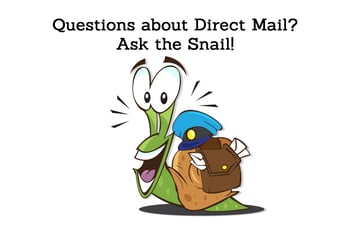How to Build Effective Direct Mail Marketing Campaigns


Despite an endless stream of digital marketing and a growing audience that prefers online communication, direct mail remains an essential part of marketing campaigns worldwide. And since 70% of consumers say direct mail is more personal than online interactions, you’re providing them with an impactful and positive experience they look forward to. However, a direct mail campaign is only as good as the circulation plan behind that campaign. An outdated, underperforming or poorly segmented plan can doom even the best campaign, resulting in lost revenues and significant expenses with little ROI.
What is Direct Mail?
According to Shopify, Direct Mail is a form of marketing that involves sending a physical piece of promotional material through the U.S. Postal Service or other courier service to a home or business.
One of the reasons direct mail has remained such a powerful force is the sheer amount of information that’s available to marketers today. In previous generations, the only feedback marketers received were responses to their direct mail queries. Today, instead of being the be-all and end-all, response rate is just one indicator of direct mail circulation success. The marketing ecosystem is much more favorable for marketers to learn more about their audience and how best to reach them.
With a limited budget and time-constraints, it’s a challenge to find the most effective ways to grow a direct mail program, but here are six tricks you can use to improve your approach.
6 Effective Direct Mail Ideas You Can Start Using Today
Make the Most of Intent Data
Clearly the greatest new tool available to direct mail circulation directors today is the data that comes from the company’s website. Your business generates mountains of information about how users behave on the website; from which pages are visited to how long a user spends on each page. This data provides a digital body language you can use to help understand buyer intent. This intent data can show that an individual is a serious prospect, or one who may need a little more time before they’re ready to consider buying from your company. If a person has received communications from you and is browsing your website, it’s a strong sign they have interest in your company. Just as important is the feedback you can derive from these interactions. If a significant number of recipients visit your website after receiving your direct mail piece, it is another indicator that your campaign was successful, and you’re reaching the right audience.
Target the Right People
While there are many contributing factors to maximizing the performance of your direct mail marketing campaigns, if you are not delivering your message to the right audience, you don’t stand a chance.
The real value of intent data is in its ability to identify new prospects and unique reactivation targets. If a first-time visitor comes to your site, clicks on several pages and spends a significant amount of time on those pages, their activity is a major indicator of their interest in your products. It’s a great time to send that prospect a postcard or other direct mail piece to introduce yourself. Similarly, lapsed customers who have not purchased from your website in years may show up on your website and display similar browsing behavior, qualifying them for a direct mail piece as well.
Today more than ever, the very consumers you should be targeting, are the very consumers telling you to target them!
Tracking and making sense of first party intent data is well worth the time and money, because this information is often unique to your company’s site, meaning that you’ll be reaching shoppers who are interested in your products and who won’t be part of the rented lists and optimized house file names provided by the database cooperatives.
Use Unique Techniques to Help You Stand Out
Just as identifying new prospects has become easier, so too has reaching out to those prospects with personalized mail pieces. Today’s printing technology has made personalization and customization a breeze, giving you the chance to reach your targets at an individualized level.
While it’s now easier and cheaper for you to advertise in this way, it is also important to understand that shoppers have come to see this approach as the norm. So customary, in fact, that the average shopper expects to be treated as an individual at every touchpoint they have with your company — whether it’s a catalog, postcard, email or social connection. Indeed, Accenture states that 91% of consumers say they are more likely to shop with brands that provide offers and recommendations that are relevant to them. It’s up to you to make sure your direct mail pieces meet the expectations of your consumer base.
Once again, these personalized communications have some pre-defined criteria. They must be convincing, and above all else, they must be distributed to the right audience. In addition to using the intent data from your website, it’s also a good idea to identify specific segments of your customer and prospect universe. For example, targeting former customers who haven’t made a purchase in 12 months with a “We Missed You!” approach, combined with a promo code offering a discount, is a great way to gauge the interest lapsed customers have in resuming their relationship with your company. You can then tailor the exact message based on what those customers previously bought, or what type of list they came from, giving you a customized approach without incurring major risk and expense.
Let Your Direct Mailers Double as Coupons
With the exception of getting the right eyes on your message, the most important part of any personalized marketing campaign is the call to action. While many articles focus on creating calls to action to drive web traffic, direct mail also needs to use compelling calls to action that give the recipient a real reason to make a purchase. Direct response marketing has always been defined by its ability to compel consumers to take immediate action based on an offer, and a coupon, or discount on a product or service is an effective way to drive action.
There’s more to a call to action than just being persuasive. You must also be clear in your communication. The reader must know exactly what they are to receive, and they must understand exactly what they have to do in order to make that happen. For example, a call to action on a mailer encouraging customers to use the direct mail piece as a coupon to redeem a discount on an in-store purchase should clearly state that this redemption only takes place in-store with a list of nearby physical locations.
The Most Effective Direct Mail Is Interactive
Calls to action and intent data are great ways to incorporate online functionality into your direct mail campaigns. But the usefulness of the Internet in direct mail goes well beyond these two capabilities.
Your ability to link your online marketing to your offline work is limited only by your imagination. Direct mail circulation doesn’t have to be, and shouldn’t be, completely separate from your online promotions. Send out email reminders to people who have received your mailings but haven’t responded. Include promo codes in your catalog that are also good for online use. Place QR codes on your letters and in your catalogs so your audience can go to your website without lifting a finger.
While you build bridges between your online and offline worlds, it’s a good idea to make sure all forms of marketing media send the same message. You should use the same logos, fonts and overall imagery in all of your communications with each audience segment. Doing this reinforces the messages you’ve sent through your direct mail, and it puts consumers at ease as they understand that they’re being courted on more than one platform by an identifiable brand.
Although you might think it counter-intuitive to incorporate these digital elements into direct mail, it actually makes a lot of sense. Think of the Internet’s capabilities as a way to enhance the effectiveness of your direct mail circulation. Anything you can do online to reach your customers and make them feel valued will only bolster the power of your direct mail campaign and vice versa.
Include high quality images
The performance of a direct mail campaign will be impacted by so many factors. You’ve selected your target audience using first party intent data. Now what? The word creative encompasses a lot, but simply put, it is the visual representation of your brand. Direct mail allows you to support the purpose, evoke feelings and make that connection, and ultimately drive engagement and conversions. That’s why choosing the image is one of the most important components to your direct mail campaign.
When evaluating your creative options, be sure you are selecting the right image for direct mail printing. The image should be in high-resolution as low-resolution photos may look blurry once printed on paper. Your Creative Director or Designer will guide you through image ideas such as people engaged in an activity, an image created by your graphic designer or a still photo. Just be sure that whatever image you select can be transferred into print as clearly as you see it on a screen.
The Benefits of Direct Mail
There are a wide range of ways to benefit from direct mail marketing. Brands may get a higher return on investment or increased brand value through direct mail marketing. Despite the different types of marketing and mailing vehicles like digital banners, PPC, emails, inbound marketing, and other content, direct mail marketing still shows undeniable benefits.
Direct mail can be a challenging media at times. With so much riding on the effectiveness of your campaigns, both your message and methodology for distribution has to be good. Fortunately, technological developments like intent data and personalization have made the challenges of direct mail easier than ever to overcome. Incorporating online elements into your campaign can only help enhance the buying experience of your prospects, increasing their loyalty to your brand. It’s time to make the most of the wealth of information and techniques at your disposal to make your direct mail programs an integral part of your company’s overall marketing efforts.
Related Topics





Comments